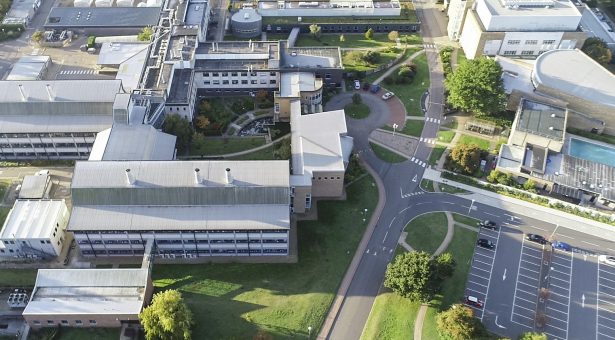Why a mixed economy is essential to address the big questions in plant and microbial sciences

The mission of the John Innes Centre has twin scientific aims – to generate knowledge of plants and microbes through innovative research and to apply this knowledge to benefit agriculture, the environment, and human health and well-being.
We are perhaps best known for our fundamental discoveries, but it is our mixed economy that I think makes the John Innes Centre such a special place.
When I took up the role of Director 11 years ago, this mixed economy was a key part of my vision. I believe that our research should span all the way from blue-sky, curiosity driven research, right the way through to applied research. And of course, all the intermediate research areas and supporting activities that join these up.
Over the past 11 years I have worked to foster a culture where a mixed economy is embraced, and where this diversity works in harmony to deliver our mission.
Our research spans diverse scientific disciplines: we deliver fundamental insights into plant and microbial life and also address high-profile national and international challenges in agriculture, the environment and human health. Here I reflect on the importance of both these approaches.
Fundamental research
There are many different names for it: fundamental research, discovery research, exploratory research, pure or blue skies research. It is sometimes referred to as ‘basic’ research which is a misnomer, as it is far from ‘basic’.
It is research that is curiosity driven, working towards answering the questions that interest us, rather than solving specific problems. For instance, a scientist might ask ‘why does a leaf grow into a particular shape?’
My own preferred term for this is fundamental research, a name which I think, gives it the importance that is deserves.
It’s only by understanding the fundamental mechanisms involved in plant and microbial life that we can begin to understand the full picture. Fundamental, curiosity-driven research leads us to the knowledge and the insights into how plants and microbes grow and interact that can allow us to make significant and profound advances. It allows us to test new ideas and gain understanding.
You only have to look back through our history to see the impact that our fundamental research has later gone on to have. Former Director, J B S Haldane, who worked on the ornamental plant Primula sinensis ended up making an important contribution to the theory of sex linkage in humans, relevant for conditions such as haemophilia and colour blindness.
A recent study looking at the architecture and growth habit of plants, asked what keeps some plants growing close to the soil while others closely related, reach high for the skies? The study identified the genes that control changes in growth habit. This may eventually assist in the development of better performing crops, but even if it doesn’t it is still important to further our understanding.
We don’t always need to know the future impact of our discoveries at the time that we do the research, the knowledge gained has a value in and of itself.
Translational research
But fundamental research only provides half the picture and to fully deliver our mission, we can’t stop at generating fundamental understanding.
It is only through combining scientific excellence with strategic relevance that we can truly address the major societal and environmental challenges that lie ahead.
In order to help solve some of the challenges facing the world, such as climate change and food security, we need to translate some of our findings into tangible advances.
For these scientific breakthroughs, we often need to develop relationships with commercial or industry partners. Whether the project aims to improve crops, to uncover new medicinal or valuable plant compounds, or to monitor global crop diseases, the translation of cutting-edge research into end use requires collaboration with partners who can provide technology scale-up, market knowledge and commercial viability.
Again there can be some issues with terminology. Some call this stage ‘applied’ research, which perhaps fails to recognise the creativity and depth of scientific rigour within this process. It is not simply a question of applying our knowledge and a solution emerges – there is a great deal of innovation involved. Others term it translational research in that we have to translate our knowledge into real world solutions.
A strategic balance
I think Professor Jane Langdale sums it up nicely in the new UK Plant Science Research Strategy. She talks about fundamental and translational research, but recognises that in reality, we need a mix of the two working together, and the balance will depend on the specific research challenge. She terms this combined approach ‘strategic research’, and I whole heartedly agree because we do need to think strategically, including when considering how to fund and support these areas.
Of course we want to maximise the economic, environmental and societal impact of research, but we cannot draw a box around specific research questions and funding. This only limits their impact and minimises our ability to make breakthroughs. We want an ecosystem where researchers are free to follow their curiosity and to really push the boundaries of human understanding and knowledge.
So we find that a careful balance needs to be struck between ring-fencing research funds in strategic areas and supporting curiosity-driven research, at which the UK leads the world, and on which our innovation ecosystem is built.
Any threat to the latter is akin to malnourishing the goose that lays the golden eggs.

